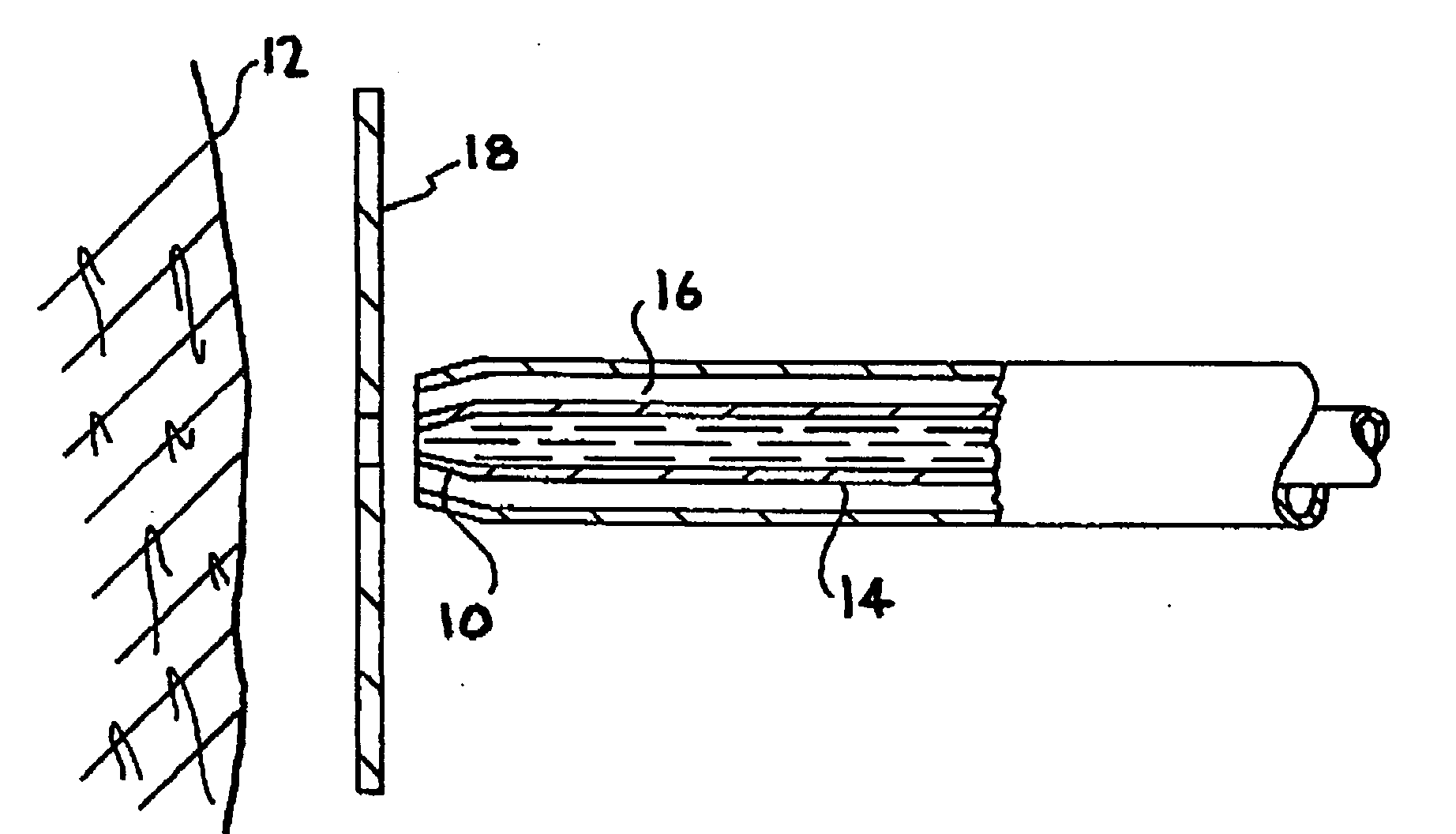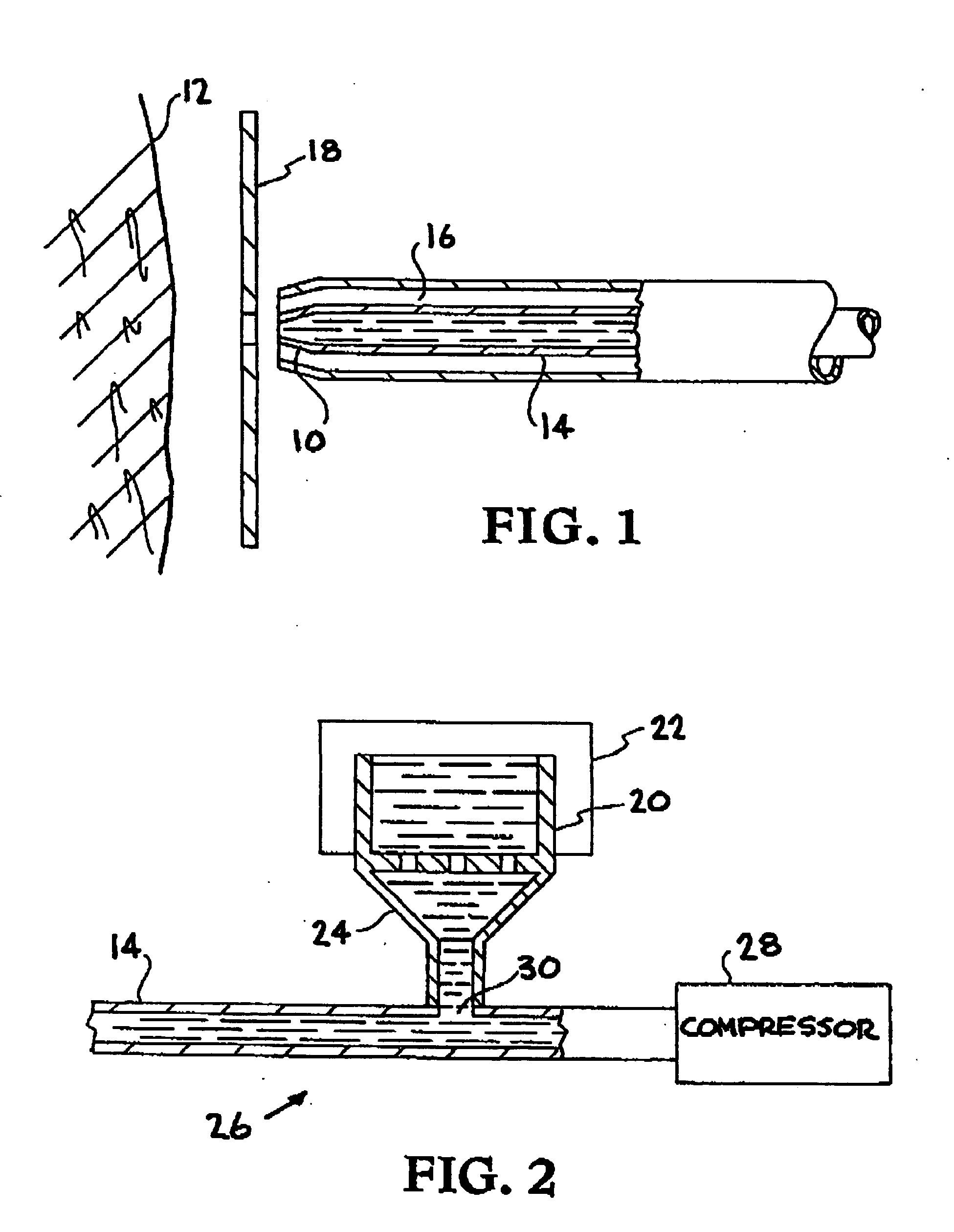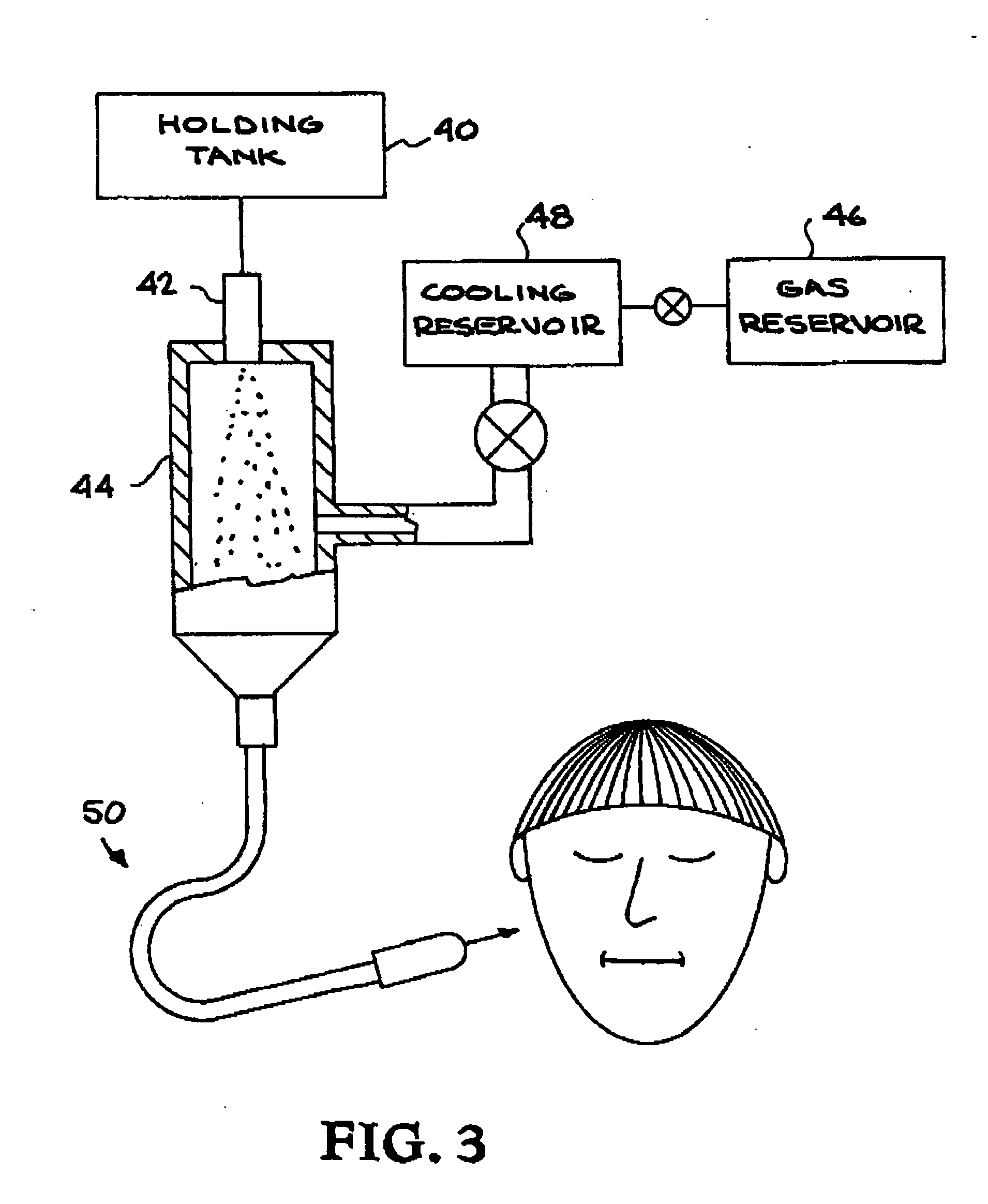Skin resurfacing and treatment using biocompatible materials
a biocompatible material and skin technology, applied in the field of skin resurfacing or skin treatment, can solve the problems of severe peeling burns, unfavorable office use, and unfavorable medical care, and achieve the effects of preventing infection, reducing scarring, and reducing scarring
- Summary
- Abstract
- Description
- Claims
- Application Information
AI Technical Summary
Benefits of technology
Problems solved by technology
Method used
Image
Examples
Embodiment Construction
[0021] The present invention is a method and apparatus for resurfacing or treating the skin using biocompatible materials that are blasted at the skin with sufficient velocity to cause destruction, loosening, or unbinding of tissues to the desired depth upon impact. The penetration depth of the particles is controlled by the operator. The materials that are propelled into the skin are non-toxic and harmonious with the human body and thus do not cause foreign body reactions, which may lead to granulomatous disease and / or scarring. The materials must be hard enough (crystalline) or propelled forcefully enough to penetrate to the appropriate depth in the dermis to remove unwanted skin features. Suitable materials include solid carbon dioxide (dry ice) and ice (H2O); organic materials such as urea, or other amines (including amino acids) or amides; organic polymers such as sugars, carbohydrates, or proteins; and inorganic salts such as phosphates, sulfates, carbonates and nitrates. Thes...
PUM
 Login to View More
Login to View More Abstract
Description
Claims
Application Information
 Login to View More
Login to View More - R&D
- Intellectual Property
- Life Sciences
- Materials
- Tech Scout
- Unparalleled Data Quality
- Higher Quality Content
- 60% Fewer Hallucinations
Browse by: Latest US Patents, China's latest patents, Technical Efficacy Thesaurus, Application Domain, Technology Topic, Popular Technical Reports.
© 2025 PatSnap. All rights reserved.Legal|Privacy policy|Modern Slavery Act Transparency Statement|Sitemap|About US| Contact US: help@patsnap.com



